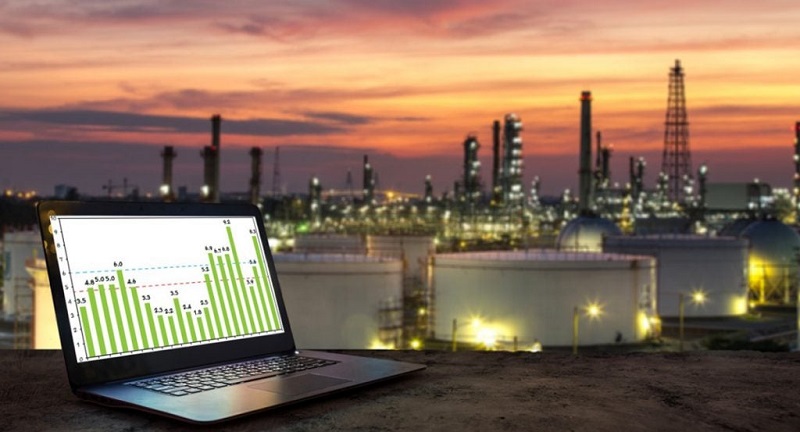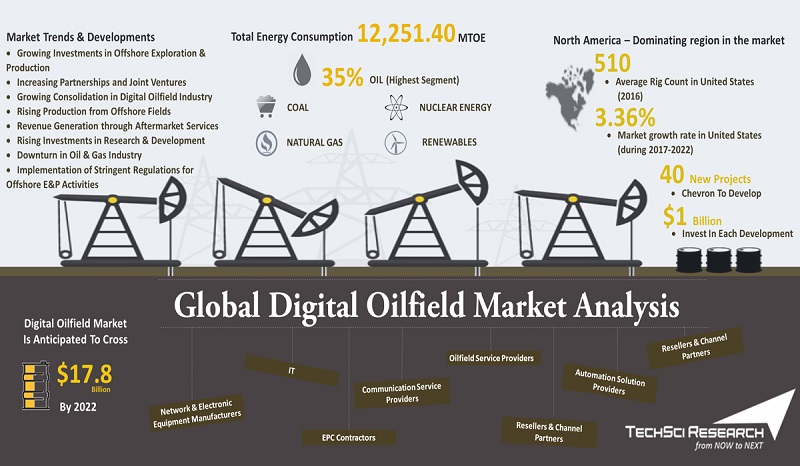Digital Oilfield: A New Century for the Oilfield
The development and implementation of intelligence has been a top priority in the development of the digital oilfield. In the past, experts would retrieve the data collected at the wellhead (including more than 50 parameters such as pump pressure, pump stroke, torque, etc.) through the background, and make judgments based on years of experience in order to help the group avoid risks in underground drilling.

This traditional way of constructing formulas based on personal experience not only requires a lot of time in the process of adjusting the parameter adaptation model, but also, in most cases, the formulas that take a lot of time to adjust the parameter adaptation model are often not applicable in new environments and need to be re-adjusted.
The emergence of big data and artificial intelligence technology is a good solution to such problems. The drilling scenario generates a large amount of data, and based on the business process, a big data body integrating the real-time wellhead acquisition data (second data), drill bit drilling tool data, drilling fluid data, and formation data is constructed, and then the relationship between these data elements and the final drilling speed is analyzed by machine learning algorithms, so as to get the prediction of the most available drilling speed. Finally, based on the drilling speed prediction model, options and quantitative values for drilling parameter optimization are then proposed in reverse. Through artificial intelligence to find the potential correlation relationship between parameters, based on the non-variable factors, by adjusting the variable factors to speed up the underground drilling speed under the premise of guaranteeing the safety, thus reducing the high time cost of drilling, and the efficiency is higher and can be quickly applied to different environments at the same time.
Through the application of intelligent drilling as an example, we can see that artificial intelligence technology in the application process, the first need to obtain a variety of sample data from different data sources, sample data in the anomaly and the problem of unified processing, and then fusion to form a training sample. Based on the training samples, the business classification of the data is carried out from the business point of view (it may be different construction well sections, different formations and lithologies or different combinations of drilling tools), and then based on the specific business classification, the feature engineering is designed to reflect the correlation relationship, which may use professional algorithms and empirical formulas. Finally, the algorithm model is formed by selecting and hooking up different intelligent algorithms for training, and then the model is released as a service, and the real-time data is used for drilling speed prediction and optimization of drilling parameters in the drilling process.
However, the process of artificial intelligence technology application is not an overnight process, and each step requires a lot of work to pave the way.
First, the problem of the difficulty of creating traditional empirical model design is solved by constructing intelligent models from business scenarios instead of empirical models, with simpler design, faster training, and dramatically reduced model research workload.
Secondly, with the intelligent model as the core, we build a complete model application process in the intelligent scenario, encapsulate complex algorithms, expose the necessary parameter interfaces, solve the problem of complex model design and creation, and reduce the difficulty of use.
Finally, through the intelligent platform, the model of scene design is solidified, and an industry/industrialized solution is formed to reduce the time spent on constructing scenes and complete the automation of intelligent scene design and creation.
With intelligent models and intelligent scenes, an intelligent platform is needed to manage the scene process and realize the reuse of data, processing, algorithms, scene process and other elements. Through the TempoAI intelligent platform, the workload of half a month in the past can be quickly established in two hours to complete the process (model) of “drilling parameter optimization scenario”.

(1) Data Acquisition
Petroleum engineering data include drilling and completion design and drilling data, logging data, and test completion data, and the frequency of data acquisition ranges from automated data measured in seconds and meters to manual data measured in hours and workdays. The real-time second data of drilling wells and real-time data of drilling fluids are imported through database or data files, which are used as data samples for the prediction model.
(2) Preprocessing of real-time drilling site data
The real-time data of drilling wellsite is generally collected and transmitted once every 3~5 seconds. Due to the constraints of acquisition equipment and transmission conditions, data quality problems may occur, as well as the status quo of multiple and mixed data. Therefore, the data processing work is very large, generally including: data field screening, data recording screening, data outliers processing, data noise processing and smoothing processing, based on data business logic screening (discrete data screening and non-business-related data screening, etc.) and other data processing methods.
(3) Data Fusion
Interpolation and fusion of various types of data from different data sources according to certain rules to form a sample set for training is called data fusion. The fusion of real-time drilling wellsite data and drilling fluid data is called a large sample set. If there are other related influences such as tubing, drill bit, formation, lithology, etc., it is also necessary to import these data samples, according to the time or depth, fusion calculations, forming a large sample set, such a sample set of the final prediction results may be more accurate (but also for the prediction model of the data requirements are also higher).
(4) Feature engineering
As machine learning requires human selection of features, because the design of feature terms based on the characteristics of business logic is a very important work. Based on SPE’s more paper studies, multiple specialized composite parameters, including MSE, are highly relevant for drilling speed prediction in ROP prediction, so calculating these feature terms using traditional business experience and formulas is an important step. Since the more complex logic is difficult to complete using patterned customized tools, TempoAI provides code embedding function to extend the algorithm function through Python or R language, etc.
(5) Data calibration
The independent and dependent variables of the sample set are set and the algorithm is selected. A sample set for prediction requires specified training data and prediction result data. After setting the data roles, the appropriate algorithm is then selected for training.
(6) Model training and model output
After the training of sample data a model is formed, this model is the result of intelligent learning, and this model is stored, which can be applied to new data for prediction and analysis at a later stage. For example, after the training of the decision tree model is completed, a tree model with parameters is formed, and this tree model can be predicted for new data. At this point, a complete process is built. Customization can be done in intelligent modeling tools or implemented using coding.
(7) Application process of applying the model for prediction
After the training model is completed, it is a process of using it against the model. Similarly, after real data is acquired, it is processed, fused, and characterized to form a data item that matches the model, and this data is computed by the model to obtain the expected computed values (classification, regression, etc.). Finally, there is a process of publishing the intelligent model as a service.
Keith Strier, Ernst & Young’s global and Americas AI consultant, believes that companies should think about technology holistically, “Value is realized by combining digital technologies together to solve a specific business problem – it’s really an all-encompassing integration of technologies.” Lance Mortlock, national oil and gas strategy leader for Canada at Ernst & Young, agrees, “The question is not which technology to use, but how the technology supports the realization of business processes and people capabilities.”
Intelligent technologies are not stand-alone technologies, but are related to the logic of traditional industries, as well as data technologies and IT. Therefore, in the digital oilfield field, AI technology should be closely integrated with traditional business. In the future, AI technology should be integrated with specific scenarios of the oilfield industry and take specific problems as the entry point in order to realize the real landing of AI and help oilfields achieve real intelligence.

 By Sun
By Sun

